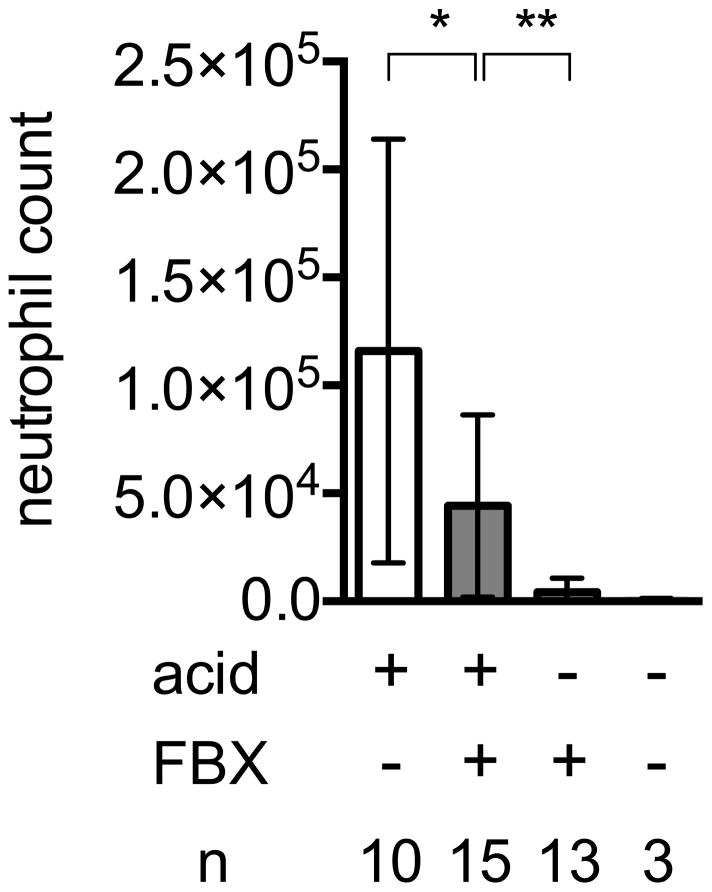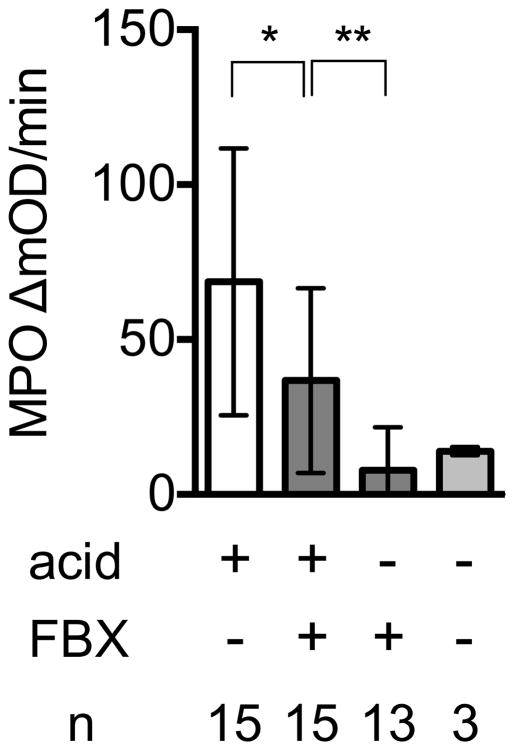Fig. 3. Uric acid involvement in acid-induced acute pulmonary inflammation.
Fig. 3A
Effect of Febuxostat on neutrophil infiltration into lungs in response to intratracheal acid challenge.
C57BL/6 mice were treated with or without febuxostat (FBX) in their drinking water for 3 days before acid injection. The mice were then given 75μl acid intratracheally and bronchial lavage (BAL) was performed 6 h later. The number of infiltrating inflammatory cells in total BAL fluid was counted on flow cytometry by co-analysis of 25000 counting beads. Means and S.D. were calculated from the accumulated data of 4 independent experiments. In individual experiments the number of mice per condition was 2–4 for experimental groups and 1 in the untreated controls. The bar shows the mean of the data and the limiting bars show the standard deviation. (n = total number of mice from the multiple experiments for each group). *P<0.05, **P<0.01 (Mann-Whitney U test)
Fig. 3B
Myeloperoxidase activity in lung tissue 6 h after acid challenge in the presence or absence of FBX treatment
Right lungs were resected from Febuxostat (FBX) or control mice 6 h post intratracheal injection of acid or no acid injection. MPO activity in each lung homogenate was measured as the kinetic OD value change at 15-s intervals for 2 min 20 s. Means and S.D. are calculated from the accumulated data of 4 independent experiments. In individual experiments the number of mice per condition was 3–4 for experimental groups and 1 in the untreated controls. The bar shows the mean of the data and the limiting bars show the standard deviation. (n = total number of mice from the multiple experiments for each group). *P<0.05, **P<0.01 (Mann-Whitney U test)


